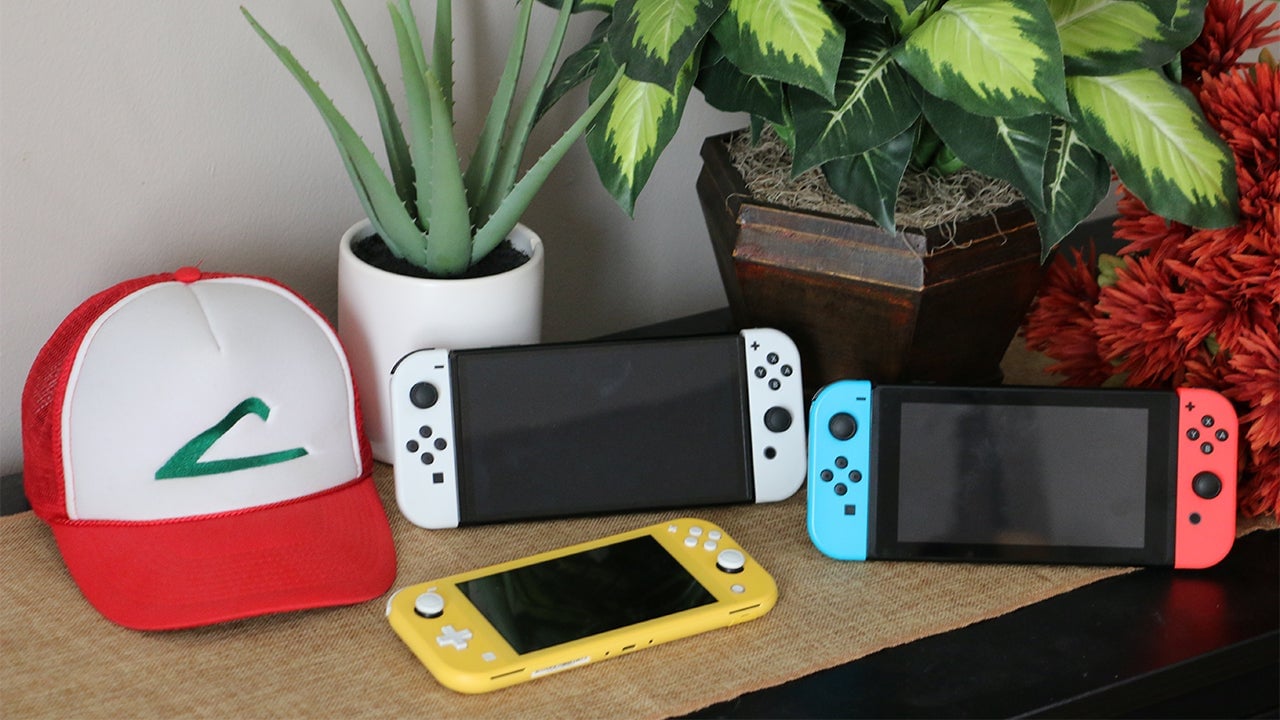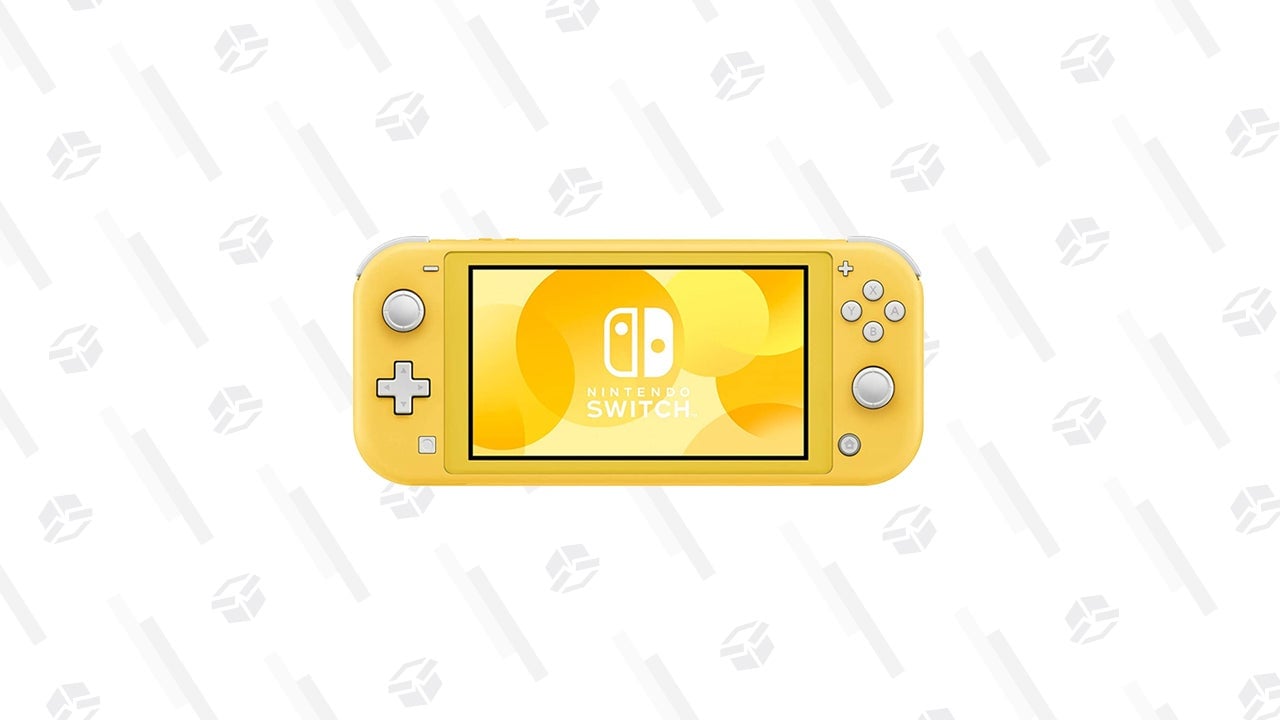So What's the Difference Between the Nintendo Switch, Switch Lite, and Switch OLED Anyway?
The key differences between Nintendo's three Switch models.

We are just about five years into the life cycle on the Nintendo Switch so it’s no surprise there are a few different variants out there. If you’re considering getting someone you love a Switch or perhaps wanting to finally join the Nintendo ecosystem yourself, here are the key differences between their three models.
Suggested Reading
Nintendo Switch | $300

Well, what we have here is the standard option. Nintendo merged their home console and handheld gaming systems into on new line that can switch between the two modes on the fly. The Nintendo Switch is the ultimate culmination of everything Nintendo has learned since entering the industry with its humble yet bold Nintendo Entertainment System (NES). It borrows its controller layout from the Super Nintendo, motion controls from the Wii, and touch screen interfaces from the Nintendo DS and Wii U.
Related Content
While this main model has had some minor improvements to things like battery life since it first launched, it is pretty much unchanged since 2017.
- Supports TV mode, handheld mode, and tabletop mode
- 6.2" LCD screen (720p)
- Video Output (1080p)
- Built-in Wi-Fi, Ethernet requires USB adapter
- Included dock
- Includes (2) Joy-Con controllers
- HD Rumble
- 32GB storage
- MicroSD card slot
Nintendo Switch Lite | $200

The Nintendo Switch Lite is the even-more-portable version of the already portable Nintendo Switch. It has a smaller screen and the controllers cannot be removed. The D-pad is also a proper D-pad like you’d be used to on other controllers as opposed to four buttons in a diamond layout. It doesn’t need to be used as anything other than a D-pad so no need to make it anything else!
This is wholly a handheld console. It can, however, be paired with Joy-Cons and played in tabletop mode either single or multiplayer. This will allow you to play any game that is released for the Switch—even if it relies on motion controls. Truth be told, if those are the games you’re interested in, you may be better off with a standard Switch. Games that are fully supported in handheld are labeled as such. The Switch Lite is built for those who prefer to game on the go or just like to snuggle up on the couch like they used to with their Game Boy. It also is a great option for parents looking to buy multiple children their own Switches as it costs $100 less than the standard and there won’t be any arguments over who gets to use the TV.
- Supports handheld mode and tabletop mode
- 5.5" LCD screen (720p)
- Built-in Wi-Fi
- 32 GB storage
- Micro SD card slot
Nintendo Switch OLED | $349

The most recent release from Nintendo has more subtle differences from the standard model than the Switch Lite does. First up, the LCD screen has been replaced with a slightly larger OLED. The two next to each other are night and day. The body of the Switch OLED is also ever so slightly longer than the standard, though it’s enough to raise compatibility issues with some third-party accessories like grips and cases. When purchasing accessories, be sure to confirm they support the Switch OLED. The included dock has some new changes like the built-in Ethernet port. The standard dock requires a USB adapter if you want a wired internet connection, while the Switch OLED’s does not.
However, as far as docked TV mode play goes, there really isn’t a difference. So if you are thinking of upgrading from the standard model to the OLED, make sure to consider how much you play in handheld mode because that’s where the Switch OLED shines. If you’re just getting your first Switch, though, the Switch OLED is absolutely worth the extra $50.
- Supports TV mode, handheld mode, and tabletop mode
- 7.0" OLED screen (720p)
- Video output (1080p)
- Built-in Wi-Fi, Ethernet port on dock
- Includes dock
- Includes (2) Joy-Con controllers
- HD rumble
- 64GB storage
- MicroSD card slot
